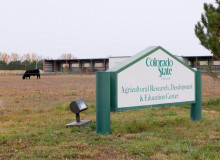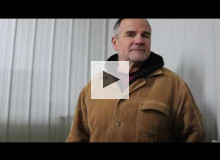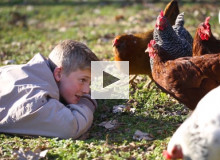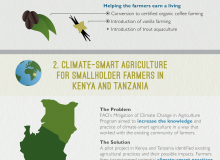climate smart agriculture
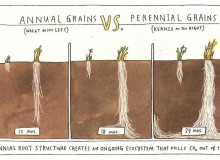
Standard annual grain roots vs. perennial grain roots of the Kernza grain. (The Land Institute/CC-BY-NC-ND)
Michigan State University
Perennial grains will change the agriculture landscape as we know it and take us one huge step closer to halting climate change.
University of Missouri
Climate change is redrawing the agricultural map of the United States. As corn becomes less economically viable with changing Midwestern weather patterns, farmers look to a more diverse future.
Planet Forward Correspondent | Colorado State University, Center for Science Communication
In this video, AgNext's Dr. Kim Stackhouse-Lawson and Dr. Sara Place discuss the future of sustainable animal agriculture.
SUNY ESF
Indoor mushroom farms offer a local alternative to meat and imported mushrooms with high greenhouse gas emissions.
UNC Chapel Hill
A 13-year-old boy is making his environmental mark by raising 60 chickens in order to sell sustainably-produced eggs.
Planet Forward
Vimlendra Sharan, the UN-FAO's Director of the Liaison Office for North America, joined Frank Sesno at The George Washington University on Sept. 28, to talk about how we're going to feed an increasingly hungry planet — and how we tell that story.
Planet Forward
As vital climate talks are conducted in Paris, citizens, scientists and others are inventing new ways to "move the planet forward."
The George Washington University
Marc Sadler and Barbara Ekwall give us an in-depth look at what climate-smart technology we need to fund and deploy to keep feeding the planet.
The George Washington University
“Climate-Smart Agriculture,” or CSA, is a popular term right now, but what exactly does it mean? The United Nations recently declared it necessary for our future food security, and now the term is starting to pop up everywhere on the agriculture and... Read More
Graphic Designer, Planet Forward
Who's climate-smart already? We take a look at three cases where the climate-smart agriculture approach has helped communities face climate change.


